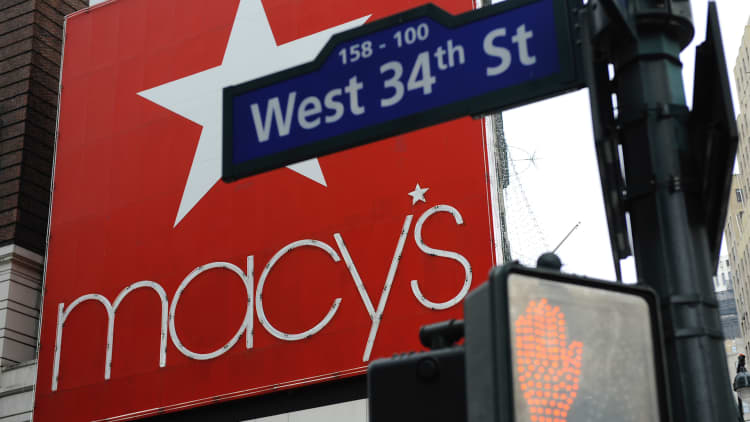For months, there's been a steady stream of store closure announcements from Sears, Bon-Ton, J.C. Penney and other retailers. And while mall and shopping center owners appear to be holding their own at the moment, that could soon change, with another wave of closures expected in 2019.
The vacancy rate at regional and super regional malls was 9 percent in the fourth quarter of 2018, based on a survey released Thursday by real estate research firm Reis of 77 metropolitan areas across the country. That's down from 9.1 percent — a seven-year high — in the third quarter, but up from 8.3 percent at the end of 2017. That's also above a 10-year average vacancy rate for these malls of 8.4 percent during the fourth quarter.
Overall, U.S. retail vacancies remained flat at 10.2 percent during the latest quarter, Reis said.
"Given the many store closures across the U.S., the minimal changes in vacancy rates show how the retail sector has withstood the structural changes in the industry," Barbara Denham, a senior economist at Reis, said. "Many feared that vacancy rates would soar and rents would plummet. This did not occur as the doomsday prognostications proved to be overblown."
Altogether, companies in 2018 announced plans to shut more than 145 million square feet of retail space across the U.S., according to real estate research group CoStar, which tracks store closures as they're disclosed. That outpaces 102 million square feet of space in 2017, a record at the time.
Looking to 2019, Denham warns that retailers big and small are expected to shut a number of locations in the coming months. These announcements tend to come during the first quarter, after the holiday season has finished and companies have a better grip on where they stand.
Reis, meanwhile, expects retail vacancy rates to "hold steady" relatively in 2019, as rents continue to tick up slightly but remain below the inflation rate.
Companies including Gap, Express and Victoria's Secret owner L Brands have already hinted at more closures. And the fate of Sears is still largely uncertain, as the bankrupt department store chain could ultimately liquidate. That would mean hundreds more Sears and Kmart stores going dark, in addition to the more than 100 locations the company is already in the process of shuttering.
The average mall rent increased 0.2 percent during the fourth quarter after dropping 0.3 percent during the prior period, Reis said. That means landlords were able to bring in higher-paying tenants. Many mall owners have already cited success in replacing Sears with more profitable businesses — and now increasingly apartments, hotels and co-working spaces. Denham added that fitness companies, trampoline parks and grocery stores have also been more active in opening new locations of late.
The U.S. cities with the highest retail rent growth during the latest quarter included Orlando, Raleigh-Durham, Austin and Richmond, according to Reis data. Those with the biggest declines included Salt Lake City and Cleveland.
"If the retail sector was able to sustain the store closures over the last year, it can survive anything," Denham said.



